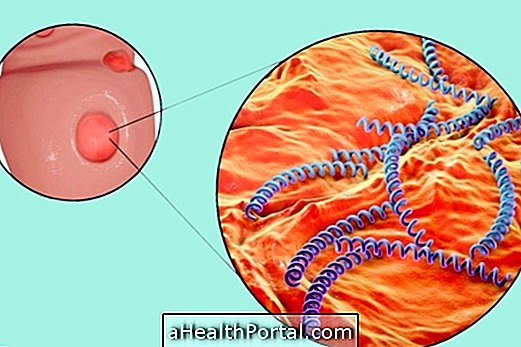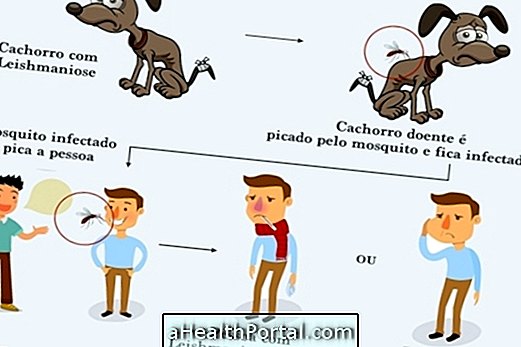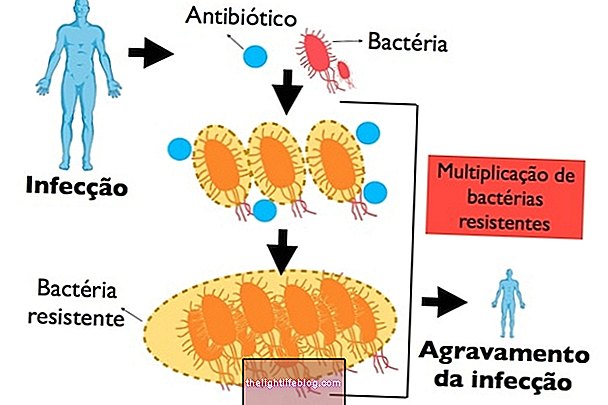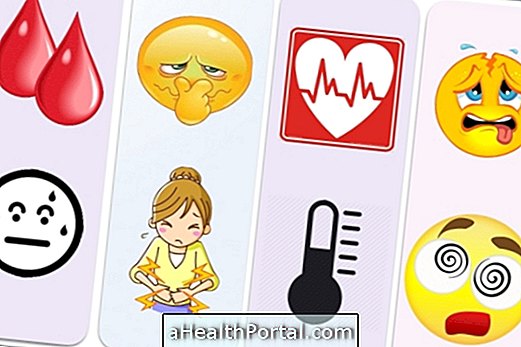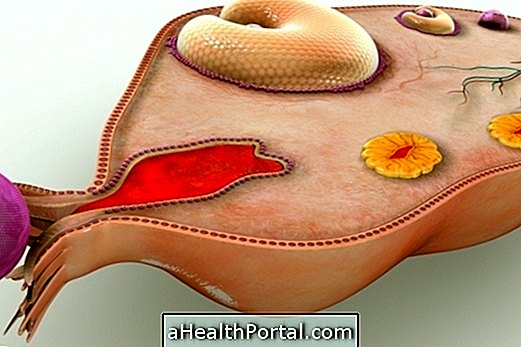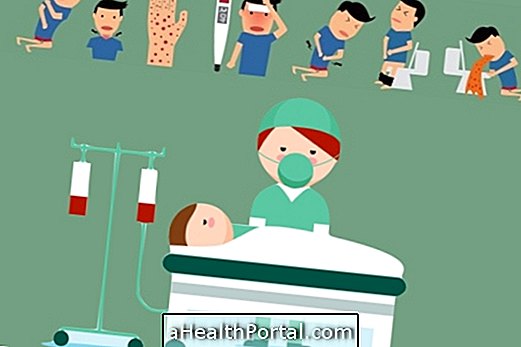Enteroviruses correspond to a genus of viruses that have as their main means of replication the gastrointestinal tract, causing symptoms such as fever, vomiting and sore throat, for example. Diseases caused by enteroviruses are highly infectious and most common in children, since adults have the most developed immune system, responding better to infections.
The main enterovirus is poliovirus, which is the virus that causes poliomyelitis, and which, when it reaches the nervous system, can result in limb paralysis and impaired motor coordination, for example. Learn more about polio.
The transmission of the virus occurs mainly through the ingestion of food or water contaminated by the virus or contact with people or objects also contaminated. Thus, the best way to prevent infections is by improving hygiene habits, for example. Here's how to avoid infectious diseases.

Main symptoms and diseases caused by enteroviruses
The symptoms of enterovirus infection depend on the type of virus and the disease caused, but usually include headache, fever, vomiting and, in some cases, sore throat, skin sores and ulcers inside the mouth, for example. Although it is more common to occur in children, adults may also have enterovirus infection, however they are usually asymptomatic due to the improved functioning of the immune system. See how the immune system works.
Enteroviruses can reach several organs, the symptoms and severity of the disease being dependent on the affected organ. Thus, the main diseases caused by enteroviruses are:
- Poliomyelitis: Poliomyelitis, also called childhood paralysis, is caused by poliovirus, a type of enterovirus that can reach the nervous system and cause limb paralysis, impaired motor coordination, joint pain and muscle atrophy, for example. Know the main sequelae of poliomyelitis;
- Hand-foot-mouth syndrome: This disease is highly contagious and is caused by Coxsackie enterovirus which causes, in addition to fever, diarrhea and vomiting, the appearance of blisters on the hands and feet and canker sores in the mouth. Learn how to identify Hand-Foot-Mouth Syndrome;
- Herpangina: Herpangina can be caused by Coxsackie enterovirus and Herpes simplex virus and is characterized by the presence of wounds inside and outside the mouth, as well as red and irritated throat. Here's how to identify and treat herpangina;
- Viral Meningitis: This type of meningitis occurs when the enterovirus reaches the nervous system and causes inflammation of the meninges, which are the membranes lining the brain and spinal cord, leading to symptoms such as fever, headache, stiff neck and increased sensitivity the light. Learn how to avoid viral meningitis;
- Encephalitis: In viral encephalitis, enterovirus causes inflammation in the brain and should be treated quickly so that possible complications, such as muscle paralysis, visual disturbances and speech or hearing difficulties, for example, can be avoided. Understand what is and how to treat encephalitis;
- Hemorrhagic conjunctivitis: In the case of viral conjunctivitis, the enterovirus comes in direct contact with the mucosa of the eye, causing inflammation of the eyes and small bleeding, which leaves the eye red. Learn more about viral conjunctivitis.
The transmission of the enterovirus occurs mainly through consumption or contact with contaminated materials, and the fecal-oral route is the main route of infection. Contamination occurs when the enterovirus is swallowed, the digestive tract being the main site of multiplication of this virus, hence the name enterovirus.
In addition to fecal-oral transmission, the virus can also be transmitted through droplets dispersed in the air, as enterovirus can also cause lesions in the throat, which is less frequent.

How to treat
The treatment of enterovirus infections is most often aimed at relieving symptoms, since there is no specific treatment for most infections caused by this type of virus. Usually the symptoms of the infection disappear on their own after a while, however, when the enterovirus reaches the bloodstream or nervous system, it can be fatal and need to be treated according to your doctor's advice.
In case of involvement of the nervous system, the doctor may recommend the administration of immunoglobulin in the vein, for example, so that the body can fight the infection more easily. Some drugs to combat enterovirus infection are in the testing phase and are not yet regulated and released for use.
Currently there is only a vaccine against the enterovirus responsible for poliomyelitis, the poliovirus, and the vaccine should be administered in 5 doses, the first being at 2 months of age. In the case of other types of enterovirus, it is important to adopt hygiene measures and access better sanitation conditions in order to prevent the contamination of water used for consumption or other purposes, since the main route of transmission of these viruses is fecal- oral. See when to take the polio vaccine.
How is the diagnosis made?
The initial diagnosis of enterovirus infection is made by the physician based on the clinical manifestations described by the patient, and laboratory tests are necessary to confirm the infection. The laboratory diagnosis of enterovirus infection is made by means of molecular tests, mainly Polymerase Chain Reaction, also called PCR, in which the type of virus and its concentration in the organism is identified. Learn more about molecular diagnostics.
Virus identification can also be made from isolating this virus in specific culture media so that the replication characteristics are verified. This virus can be isolated from various biological materials, such as feces, CSF, throat and blood secretion, for example, depending on the symptoms described by the person. In faeces the enterovirus can be detected up to 6 weeks after infection and can be detected in the throat between 3 and 7 days after the onset of infection.
Serological tests may also be required to check the immune system's response to infection, however this type of test is not widely used to diagnose enterovirus infections.


